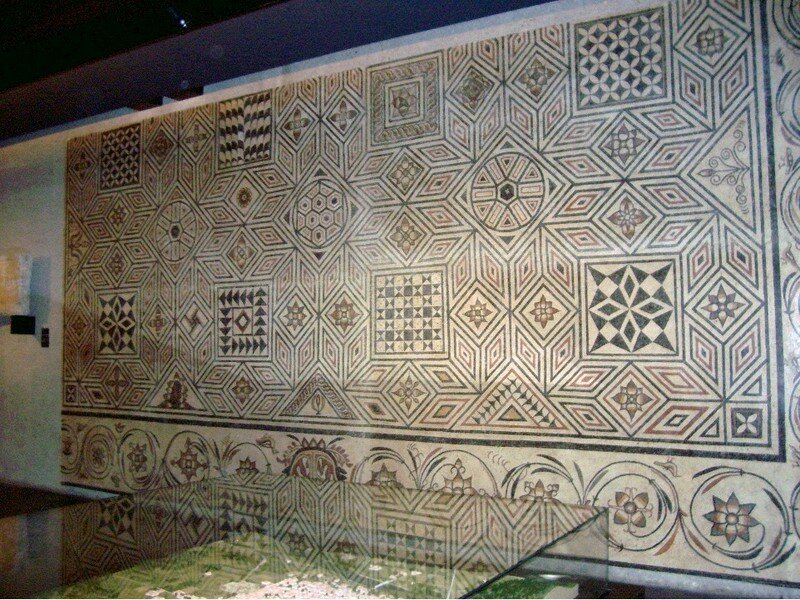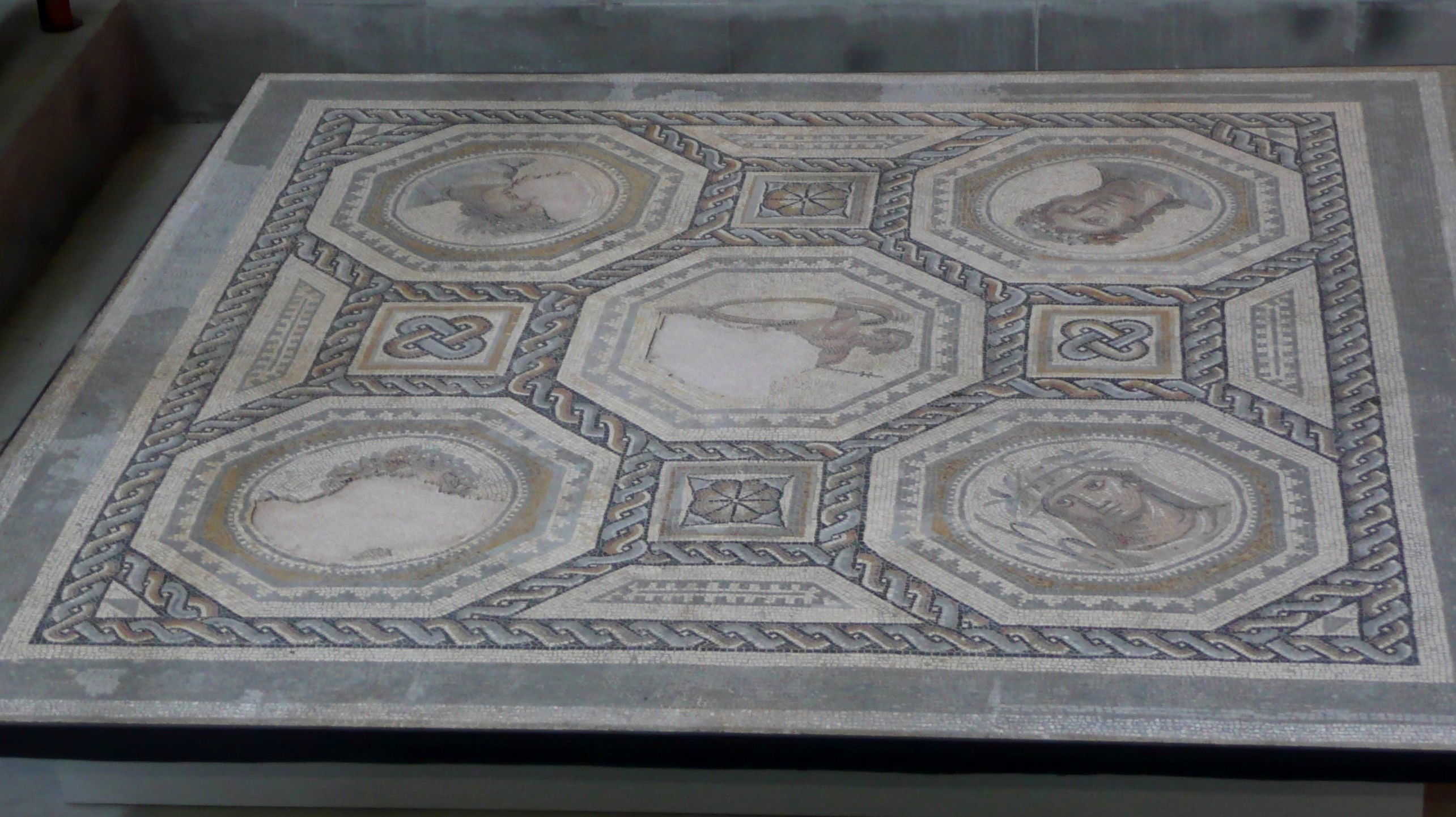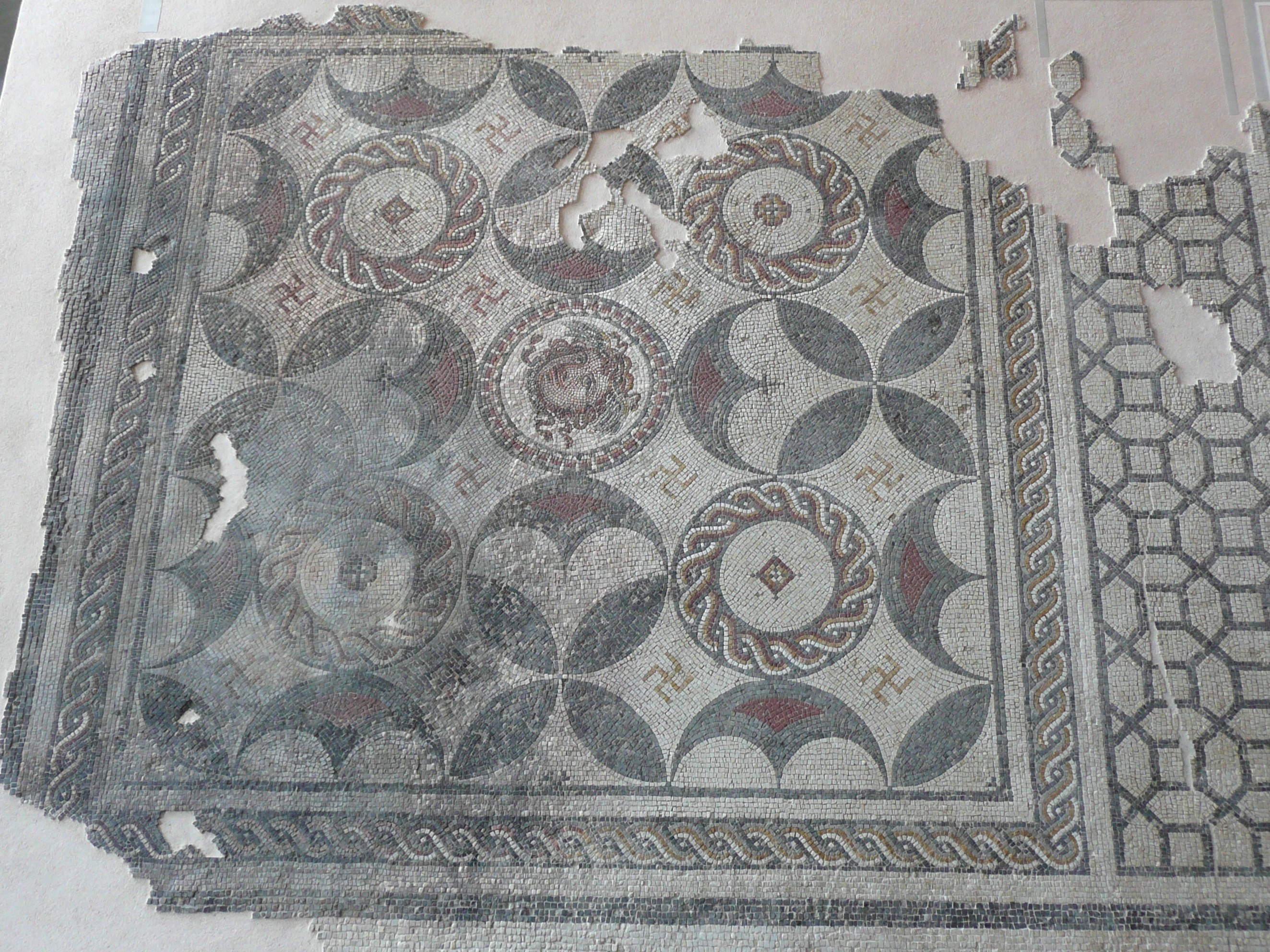Shauna is an author, historian, and scientist, so she eagerly did some further research for me on these mosaics. You can meet Shauna on her website which showcases her books and has a fun blog with lots of info on her wide-ranging interests. There are links to an interview in which you can learn lots more about her and her work. And in this interview, Shauna talks about the amount of in-depth research she does to create such detailed and believable settings for her historical fiction. Reading her work pleases my archeologically-trained mind no end!
And now, back to the floor, a stone mosaic. It is now displayed on a wall a the Musee Gallo Romain Perigueux. It was probably created in the first century AD, when the area was occupied by the Roman Empire, so it is around 2000 years old. It's made from tiny square-ish bits of stone. The colors are those of the local geology, possibly with the addition of stones that were obtained along the extensive trade routes of the empire. It was possibly discovered around 1900 by someone named de Gaubert, but the stories around that are not at all clear.
Le Blog d'Isis has a photo showing a wider view of the floor as it is installed at the museum, and gives a sense of its size.
Here's what amazed me: There can always be inspiration for pieced quilt patterns in tiled and parquet floors and other architectural detailing, and that is always fun. But here, in just one photo, are several patterns that are known, loved, and named in American quiltmaking.
I see: Ohio Star, Flying Geese, Kaleidoscope, and Lafayette's Orange Peel. How cool is that!
Shauna found two collections of mosaic images on Wikimedia (overlapping in content somewhat but not entirely) that show many more Roman mosaics in France - here and here.
Here are some quilt-y highlights. Check back to the Wikimedia pages if you want info on where these mosaics are located and other photo details.
Another floor in which I see Clamshell, Trip Around The World, something akin to an off-center Log Cabin, and something akin to either Pickle Dish or Double Wedding Ring.
Here is Baby Blocks, complete with a cable "quilted" border. This close-up view also shows the mosaic technique very nicely.
photo by Remi Mathis
Another Double Wedding Ring type of design:
photo by Jack Ma
Here is Snowball:
photo by Finoskov
photo by Finoskov
Also, this mosaic uses the swastika design, which is an ancient, as you can see, and a widely used design that was adopted by the Nazis, not created by them. And here, for those of you who love lots of intricate quilting, is a medallion with fantastic sawtooth and cable borders. How about that double cable effect on the innermost border? Very cool.








No comments:
Post a Comment